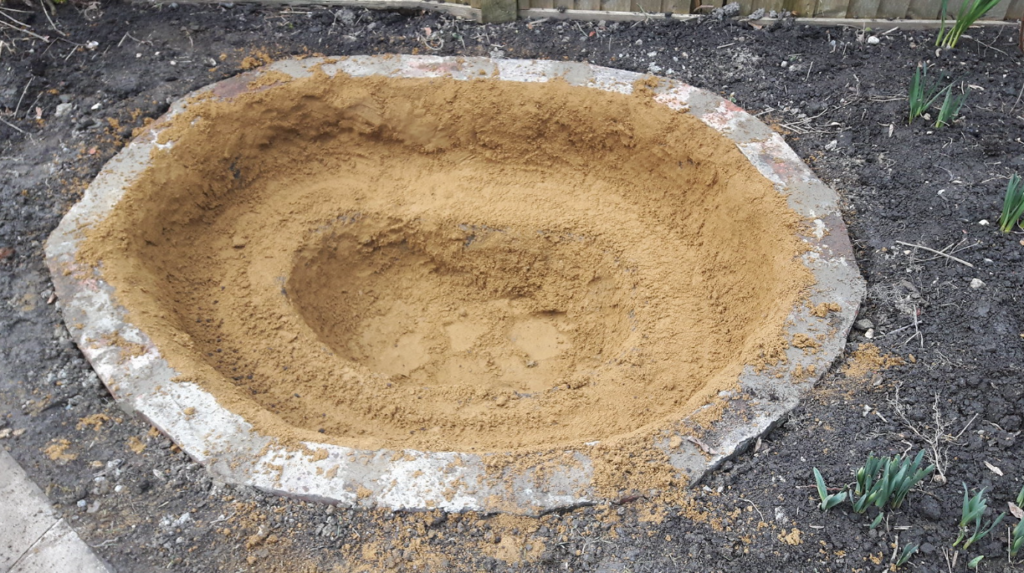As a landscaper, I have had the opportunity to dig a lot of ponds over the years. There is something special about creating a water feature in your backyard that draws people in and adds a touch of natural beauty to your outdoor space.
Some of the links in this article may be affiliate links. If you make a purchase through these links, we may earn a small commission at no extra cost to you. Thank you.

If you have always dreamed of having a pond in your yard, then you are in luck! In this blog post, I will walk you through the steps of how to dig a pond and share some tips and tricks that I have learned along the way.
Step 1: Plan and prepare
Like most projects, before you actually start digging, it is important to take the time to plan and prepare for your project.
Here are a few things to consider:
- Size and shape: The first thing you will need to decide is the size and shape of your pond. Consider the size of your yard and how much space you are willing to dedicate to the pond. Also, consider the type of plants and animals you want to include in your pond. This will help you determine the optimal size and shape for your pond.
- Location: Choose a location for your pond that is easily accessible and has good drainage. For example, you don’t want your pond to be in a low-lying area where it is prone to flooding or in a spot that is difficult to maintain.
- Permits: Depending on where you live, you may need to obtain a permit before you can start digging. Check with your local government to see if a permit is required and if there are any restrictions or guidelines you need to follow.
Step 2: Mark the outline of the pond
When you have established a well-defined plan, it is essential to proceed with outlining the pond.
This can be accomplished by utilizing a hose or rope to mark the precise perimeter of the pond, or by employing specially designed grass spray paint.
It is crucial to ensure your satisfaction with the shape and size of the pond before proceeding to the next step.
Step 3: Excavate the pond
Now it’s time to start digging! You can use a shovel or a small excavator to remove the topsoil and create the outline of the pond. If you are using a shovel, you may want to rent a sod cutter to remove the grass more efficiently. Be sure to remove at least six inches of soil to allow for adequate liner and filtration.
Step 4: Install the liner
Once you have dug out the pond, it is time to install the liner. There are a few different types of pond liners to choose from, including rubber, PVC, and EPDM. Rubber liners are durable and resistant to punctures, but they can be more expensive. PVC liners are less expensive, but they are not as durable as rubber liners. EPDM liners are a middle ground between the two – they are more durable than PVC liners and less expensive than rubber liners.
To install the liner, lay it out in the pond and trim it to fit the shape of the pond. Then, anchor the liner to the sides of the pond using a liner lock, liner plate, or liner clips. Finally, fill the pond with water and smooth out any wrinkles in the liner.
Step 5: Install the filtration system
A filtration system is essential for keeping your pond clean and healthy. There are a few different types of filtration systems to choose from, including biological, mechanical, and chemical filtration. Biological filtration uses bacteria to break down waste and ammonia, mechanical filtration removes debris and solid particles from the water, and chemical filtration uses chemicals to remove impurities

